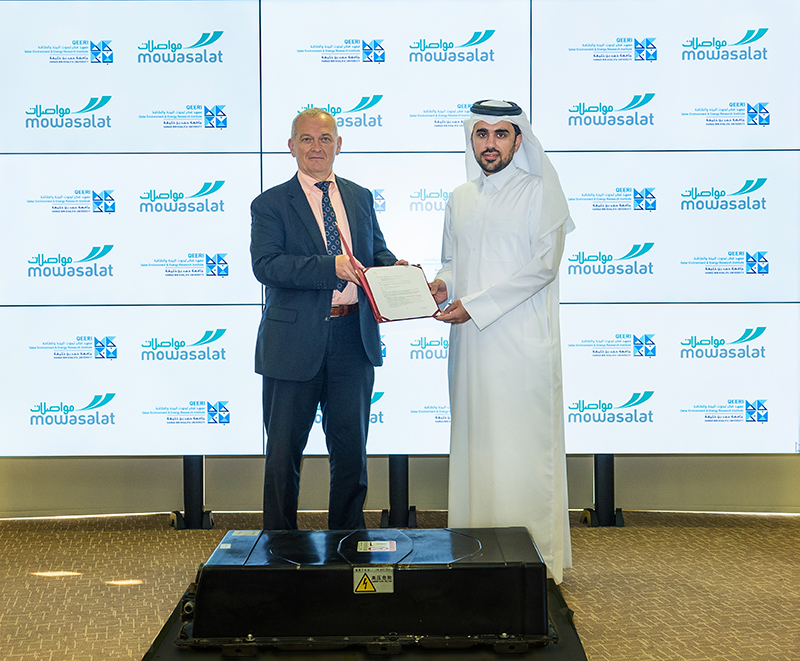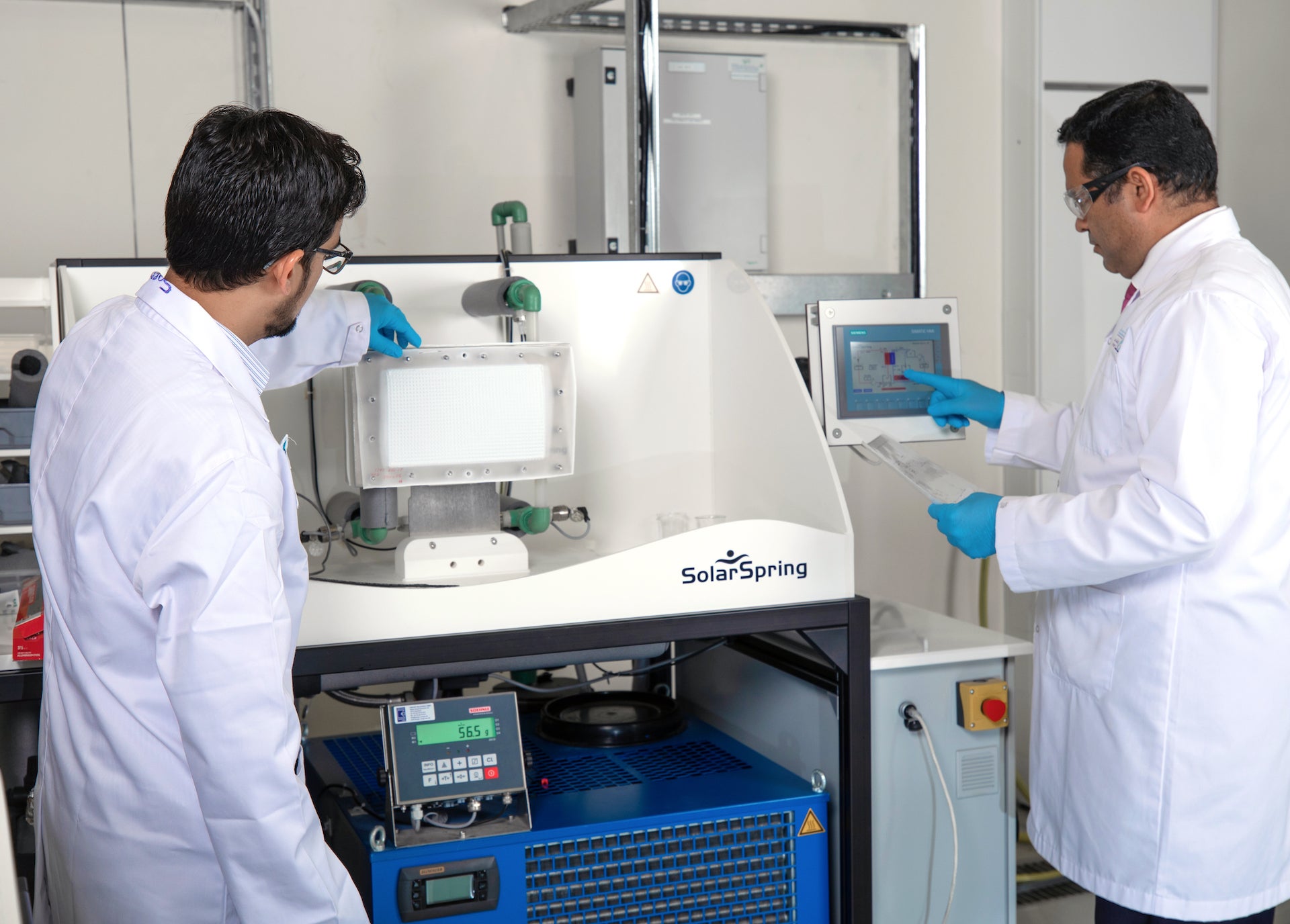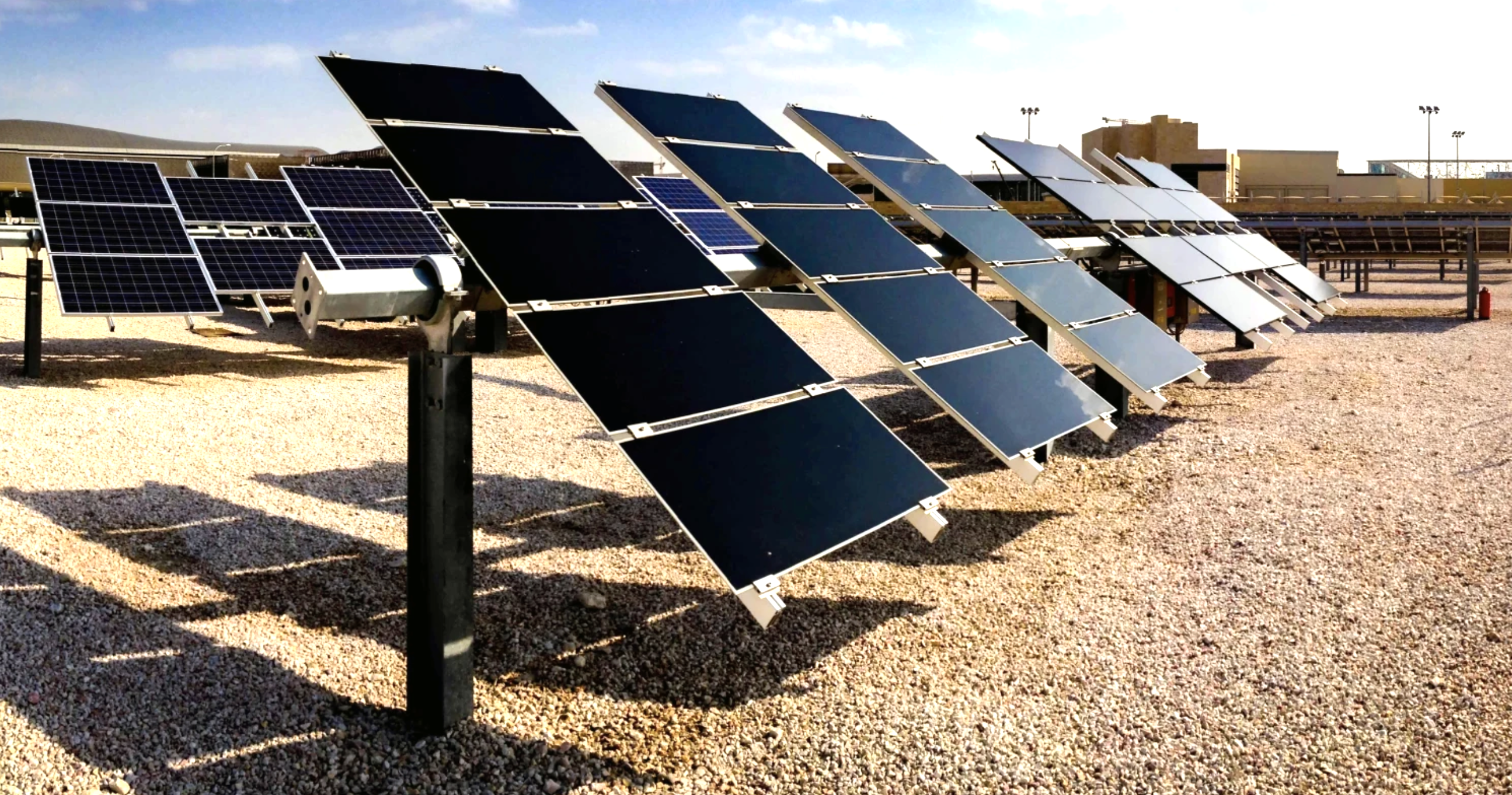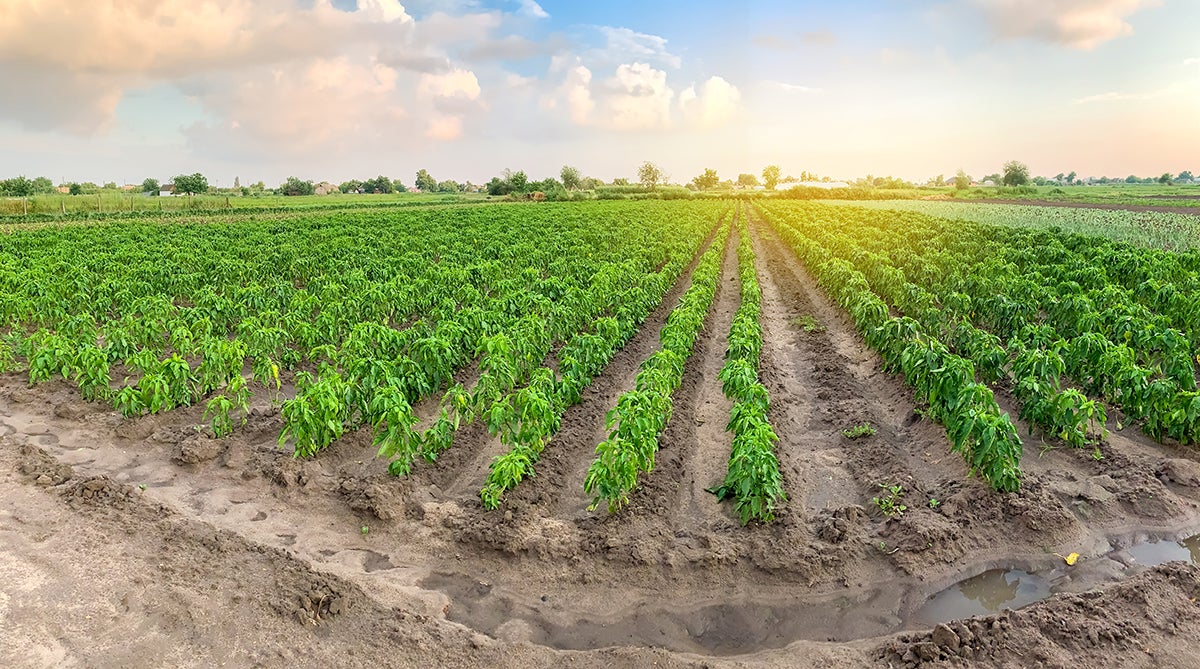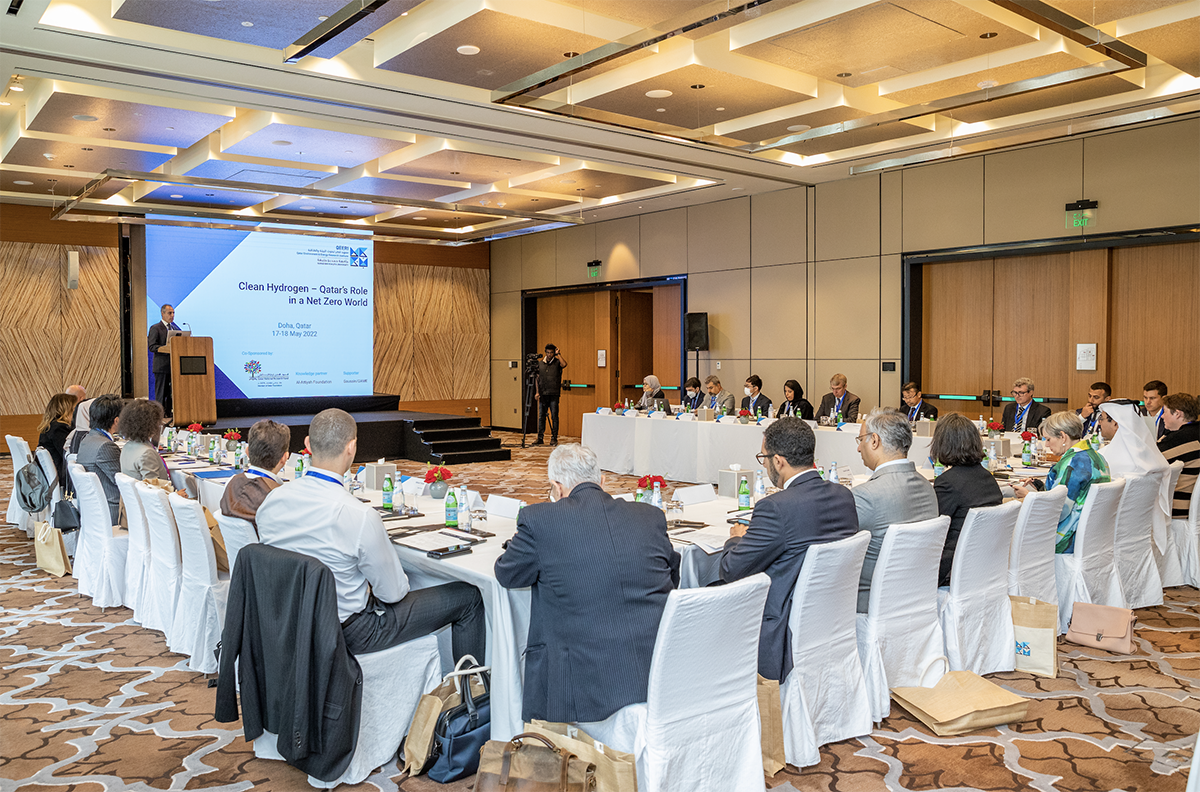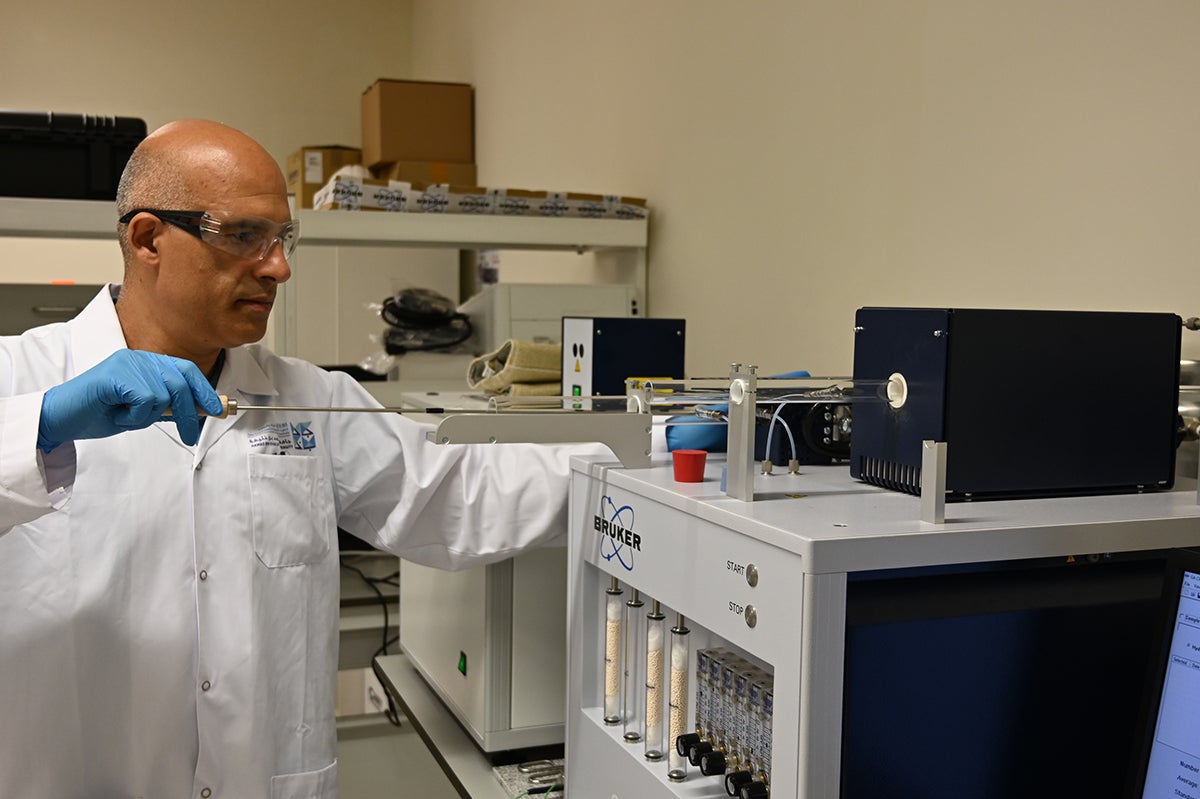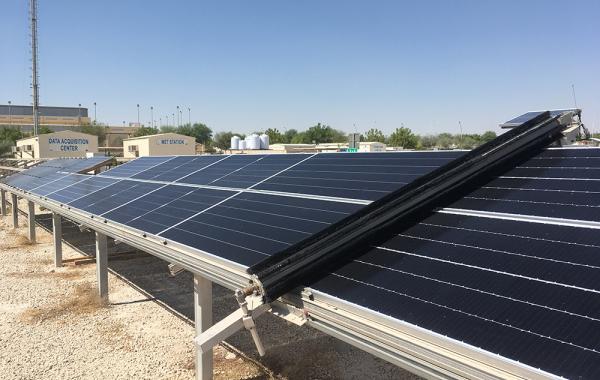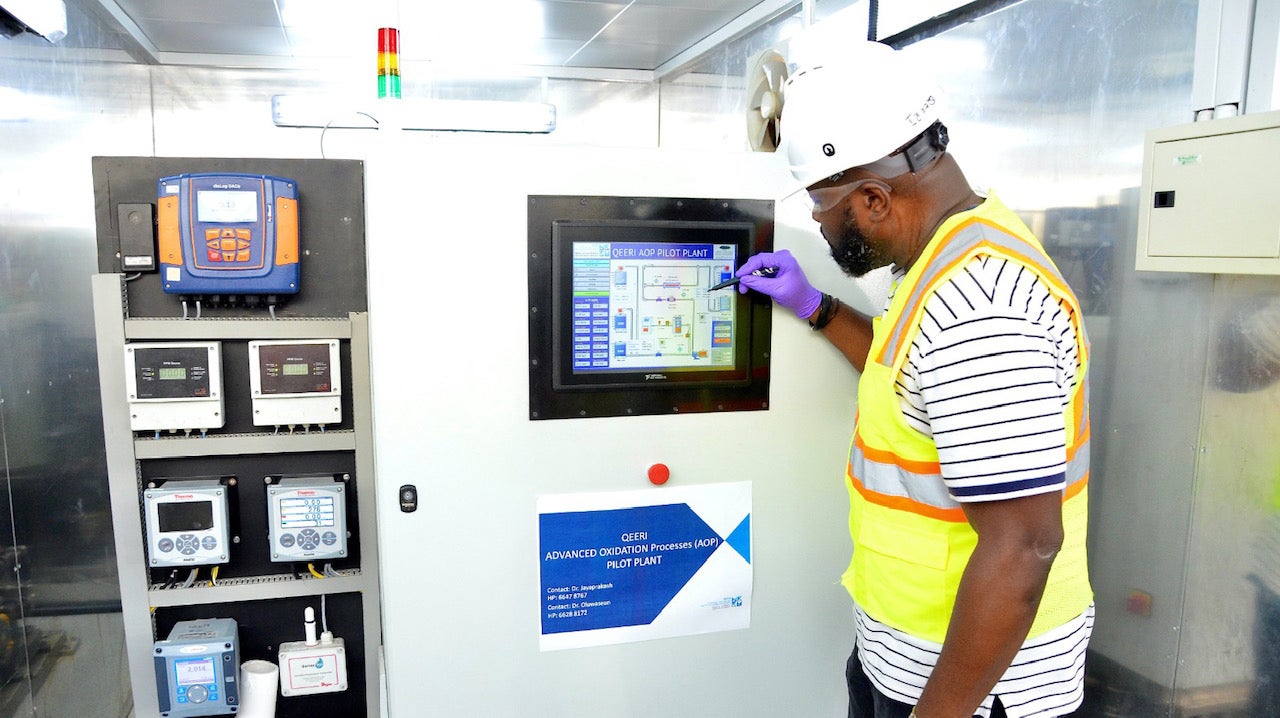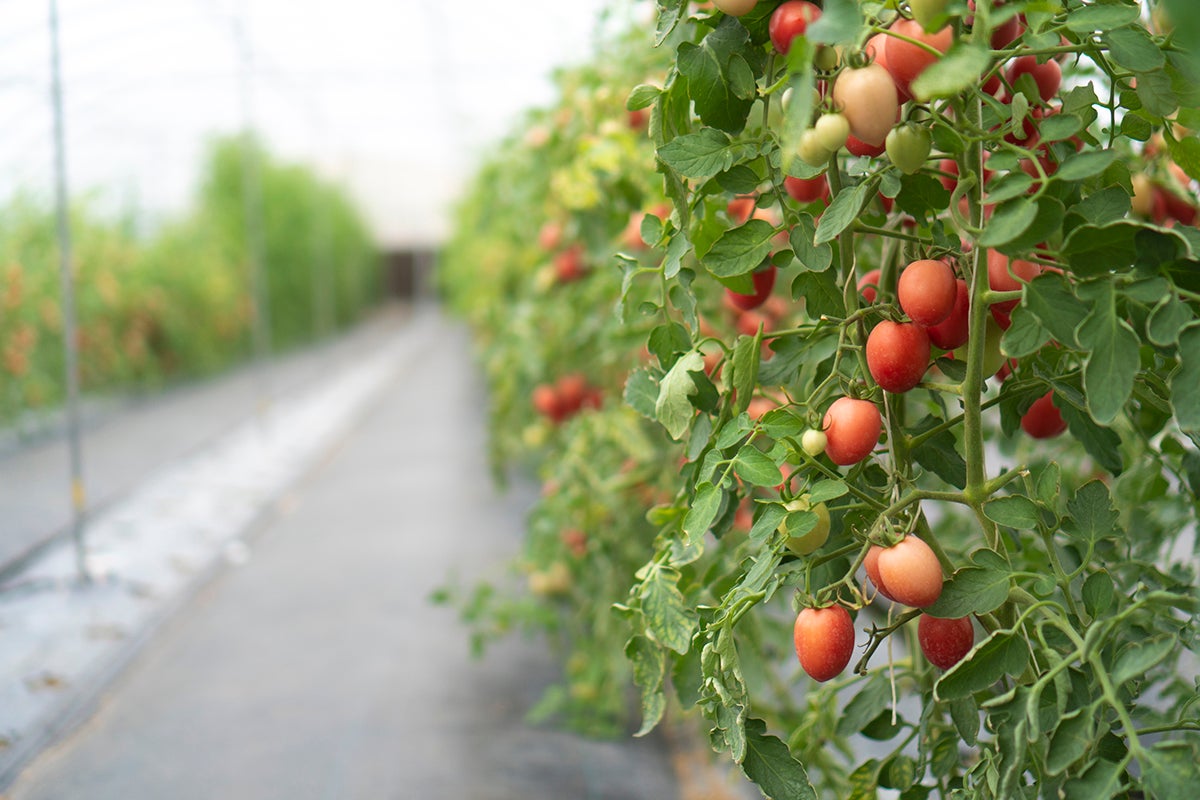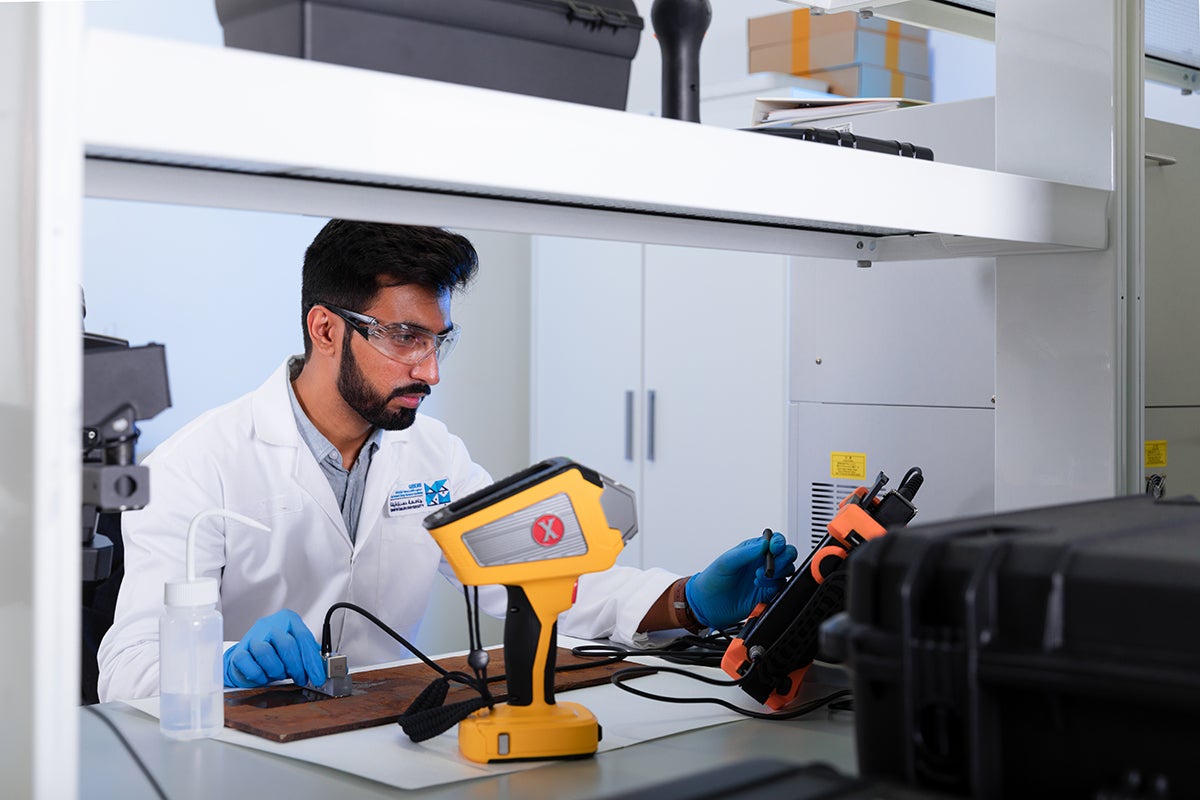
Qatar Environment and Energy Research Institute Providing Key Data for Development of Al Kharsaah 800MWp Photovoltaic Plant
In January, Qatar announced its ambitious plans to develop the Al Kharsaah photovoltaic plant, a solar energy site that is the first step towards the country’s long-term objective to produce 20 percent of its electricity through solar energy by 2030.
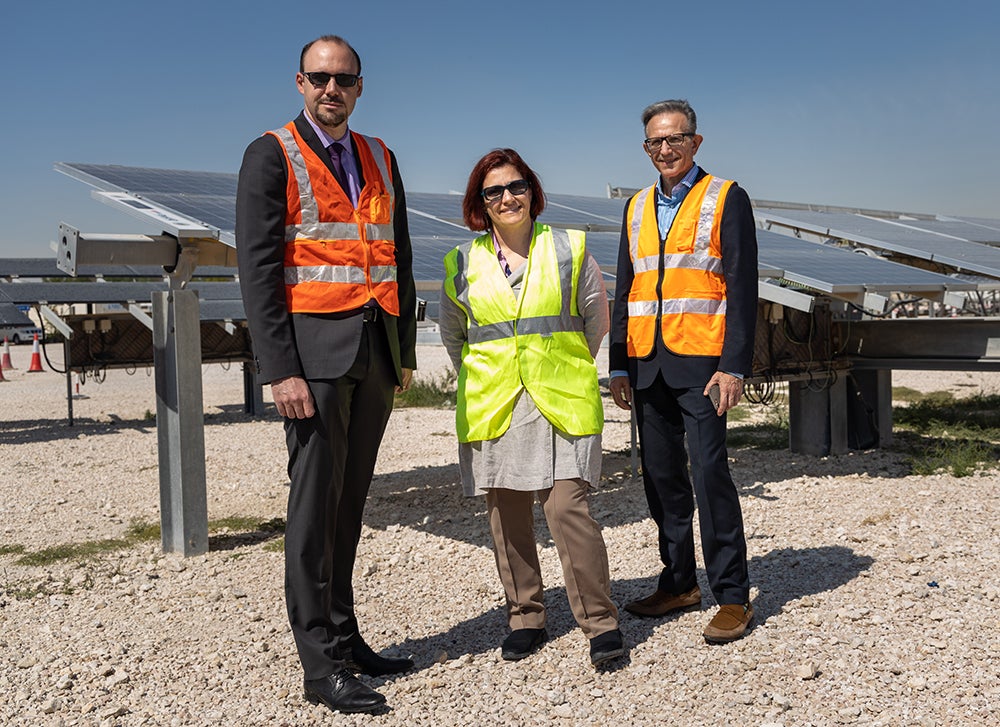
Qatar Environment and Energy Research Institute (QEERI), part of Hamad Bin Khalifa University, is playing an integral role in conducting key research in helping the country harness the power of the sun, which is in abundance all year round. The institute is working alongside the winning bidders – France’s Total and Japan’s Marubeni – and KAHRAMAA to provide key data and measurability to ensure optimization in developing the solar plant as part of the Siraj project.
Dr. Antonio P. Sanfilippo, Dr. Veronica Bermudez and Dr. Cedric Andre Broussillou are the scientists at the helm of QEERI’s involvement in the country’s biggest solar project yet. Once fully operational, the 1000 hectares (10km²) plant, estimated at costing 1.7 billion Qatari riyals, is expected to produce 800 megawatts, accounting for a tenth of the country’s current peak energy demand.
The three scientists and their teams at QEERI’s Energy Center have been involved in the project from the outset to ensure the provision of solar measurement data, which is one of the core functions of QEERI’s energy management program.
“We have very specialized equipment that records the various components of solar radiation in real-time, and we have 14 solar monitoring stations across Qatar, including one at the Al Kharsaah site,” explained Dr. Sanfilippo.
“One key aspect of QEERI’s involvement in this project is providing precise solar resource data to reduce the risk of error when calculating the bankability - i.e. how much the solar plant will be able to produce based on the amount of solar power that can be harnessed. In doing so, we provided bidders to KAHRAMAA’s tender with four years of data from the physical solar stations as well as with data derived from the QEERI satellite receiver.”
In addition to the data which assisted bidders to assess the bankability of their offers, QEERI has also developed a solar forecasting service and a solar atlas. The ability to forecast solar radiation minutes, hours, and days ahead is crucial to optimizing solar energy integration by ensuring grid stability and efficient use of diverse energy resources, and regulating energy markets. The solar atlas is able to measure different aspects of solar radiation and expected solar output, which can be harvested based on the unique set of environmental challenges facing desert climates.
“The solar atlas that we have developed will assist the country to establish the optimal location to set up future solar plants in Qatar. It measures atlas solar radiation in different locations and the quantity that can be expected for the entire country,” noted Dr. Bermudez.
In parallel with the solar atlas, QEERI has also established a solar consortium with leading local and international partners – KAHRAMAA, Total, Hanwha QCells – that undertakes key research focused on local climate specificities to further complement their global efforts.
The solar consortium is a research body which is using the test site installed at QEERI – a 35,000 square meters facility – to understand the behavior of the different technologies of solar photovoltaic (PV) and trackers to address the main challenges that can be expected from a solar PV operation in Qatar.
“Most of the challenges facing Qatar are related to reliability and soiling, which can negatively affect PV modules, inverters and sun trackers. Through our research, we are assessing the soiling – i.e. how much energy will be lost because of the dust that settles on the modules – which enables us to identify the best technologies to employ to mitigate these challenges and to forecast them in order to reduce the O&M costs,” said Dr. Broussillou.
These cutting-edge technologies used to address the challenges of reliability, soiling and highest electricity production are the bifacial modules with a single axis sun tracker and robotic cleaning. These technologies are not mainstream in the industry yet, but are gaining strong momentum worldwide and the environmental conditions in Qatar makes them particularly relevant for the country.
“The bifacial modules are able to attract the sun’s rays not only from the surface exposed to the sun, but also from the back side facing the ground. This technology ensures you’re able to harness a large quantity of energy thanks to the high albedo that can be measured in Qatar,” said Dr. Bermudez.
The interest for bifacial modules was underscored during the International Conference on Sustainable Energy Water and Environment Nexus in Desert Climates 2019 (ICSEWEN’19), QEERI’s flagship conference held in December 2019. Global energy experts, who attended the PV in Desert Environments workshop held as a pre-event for the conference, validated the use of bifacial modules with trackers in the region, noting their relevance in addressing region-specific challenges and their capacity to further reduce the cost of photovoltaic electricity.
Over the past 10 years, there has been a continuous decrease in PV system prices with the cost being ten times lower today than in 2010. This means that installing PV systems has become an attractive option in the Middle East and North Africa region, which has seen among the lowest bids proposed through tenders in the world.
“The price of electricity generated by solar is now extremely low with KAHRAMAA identifying the cost at below 1.74 US cents per kilowatt-hour. This means that based on the size of the Al Kharsaah plant, the cutting-edge technology used and cost, the Siraj project is a landmark in the region and in the world,” said Dr. Broussillou.
As the Siraj project enters the development phase, QEERI will continue to provide their expertise and insights to realize and even surpass the targets outlined by Qatar.
“The overall target for 2020 was set at two percent and based on our calculations, we are set to exceed that and are well on course to meet the 2030 target of 20 percent,” said Dr. Sanfilippo.
Dr. Marc Vermeersch, executive director at QEERI, said: “Embarking on an endeavor of this scale is a major feat for the country, and one that the QEERI scientists and engineers are honored to play an extensive role in, working closely with all key stakeholders to support the country in achieving its ambitious sustainable energy goals.
“There here has been a great synergy between all stakeholders involved. It has been an exciting opportunity for QEERI to provide its expertise and support from the very beginning. The key research and data we have brought to the table for this exciting and unprecedented project will ensure that the winning bidders are able to reliably provide solar powered electricity to the country.”
Related News
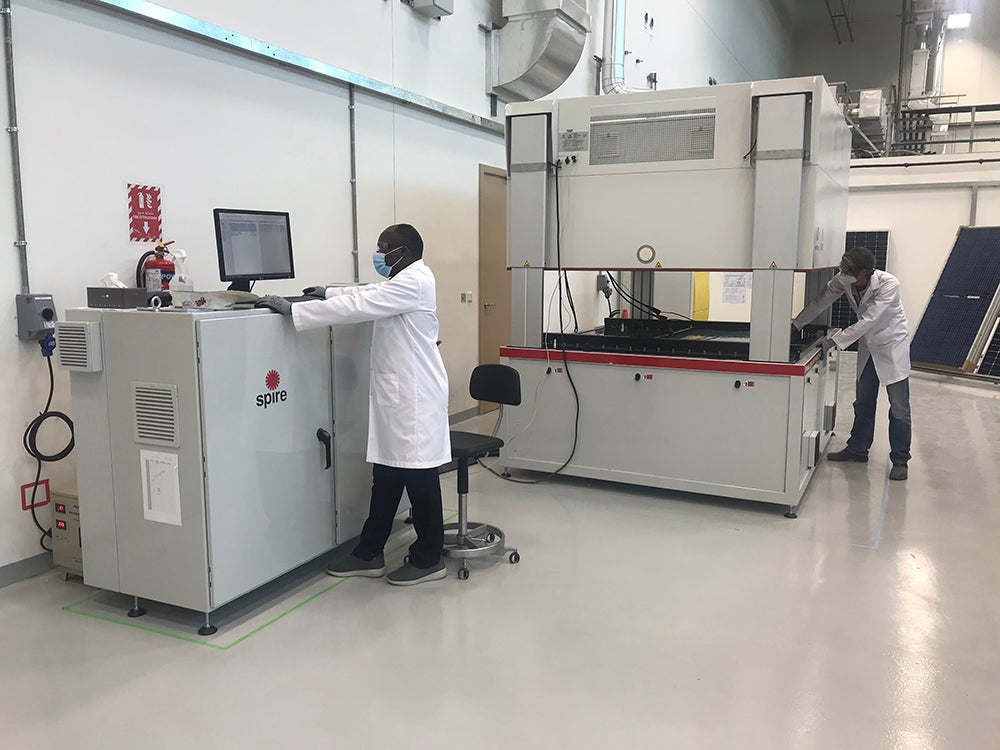
HBKU’s Qatar Environment and Energy Research Institute a Growing Force in Solar Technology Research
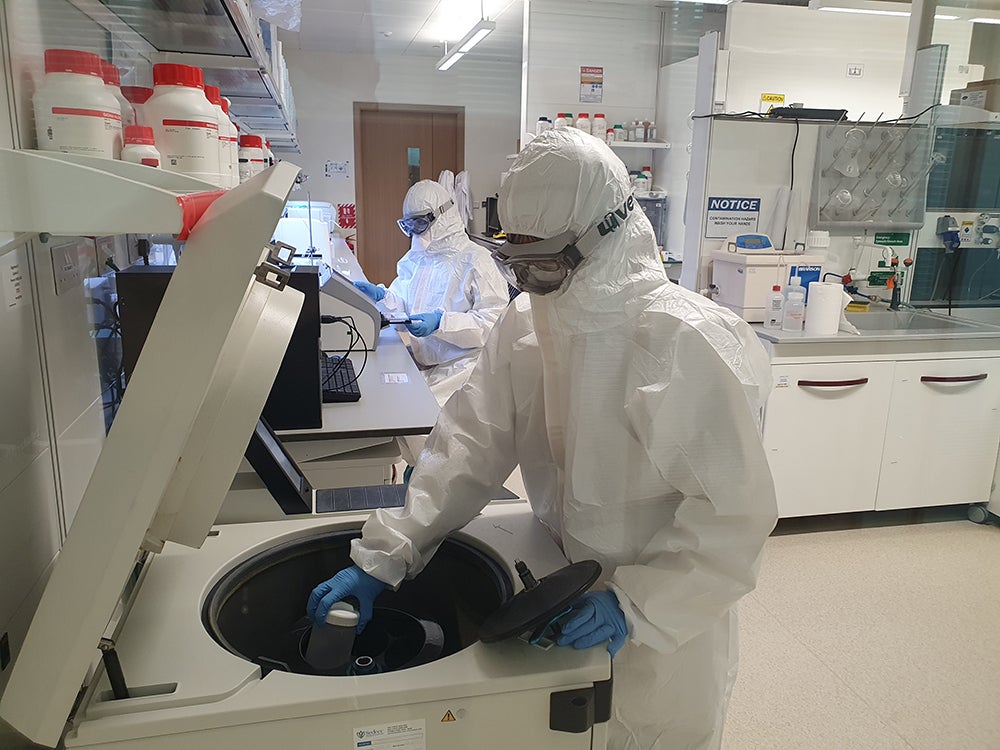
HBKU’s Qatar Environment and Energy Research Institute and Qatar Stakeholders Collaborative Project Aims to Detect COVID-19 in Wastewater
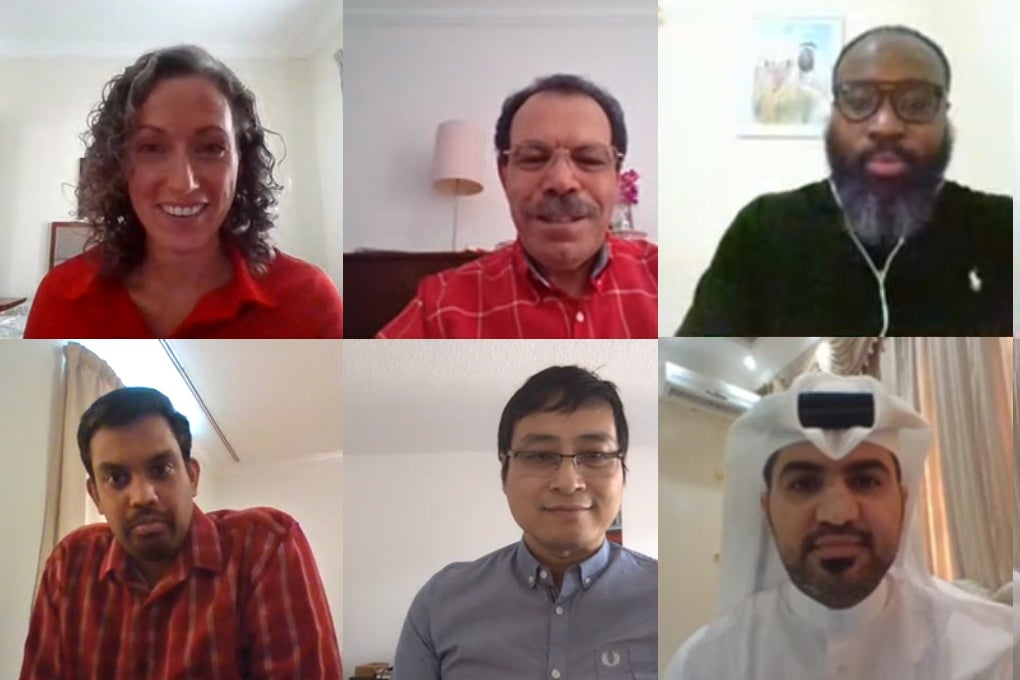
Qatar Environment and Energy Research Institute at HBKU Develops New Technology to Remove Oil from Seawater
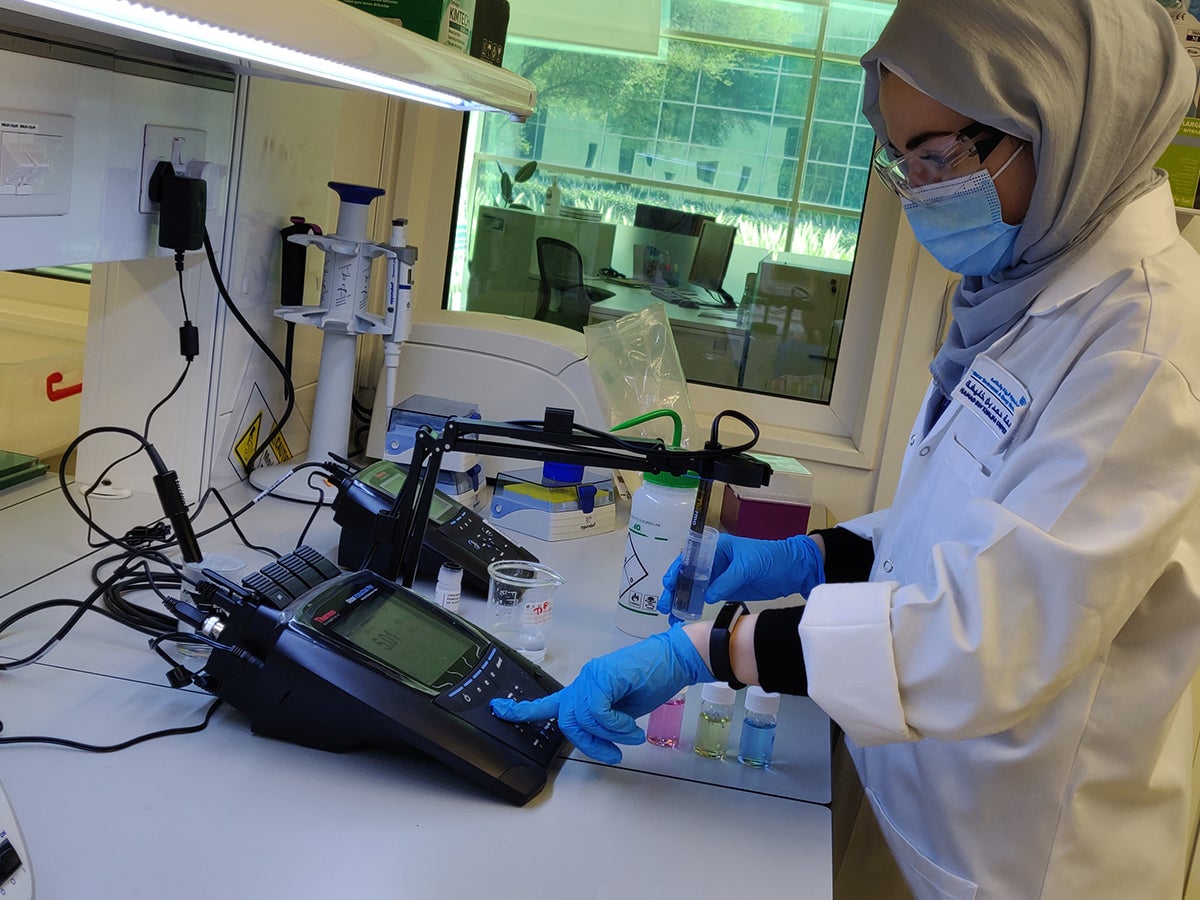
Advancing Qatar’s Circular Water Economy: Qatar Environment and Energy Research Institute Marks 10 Years
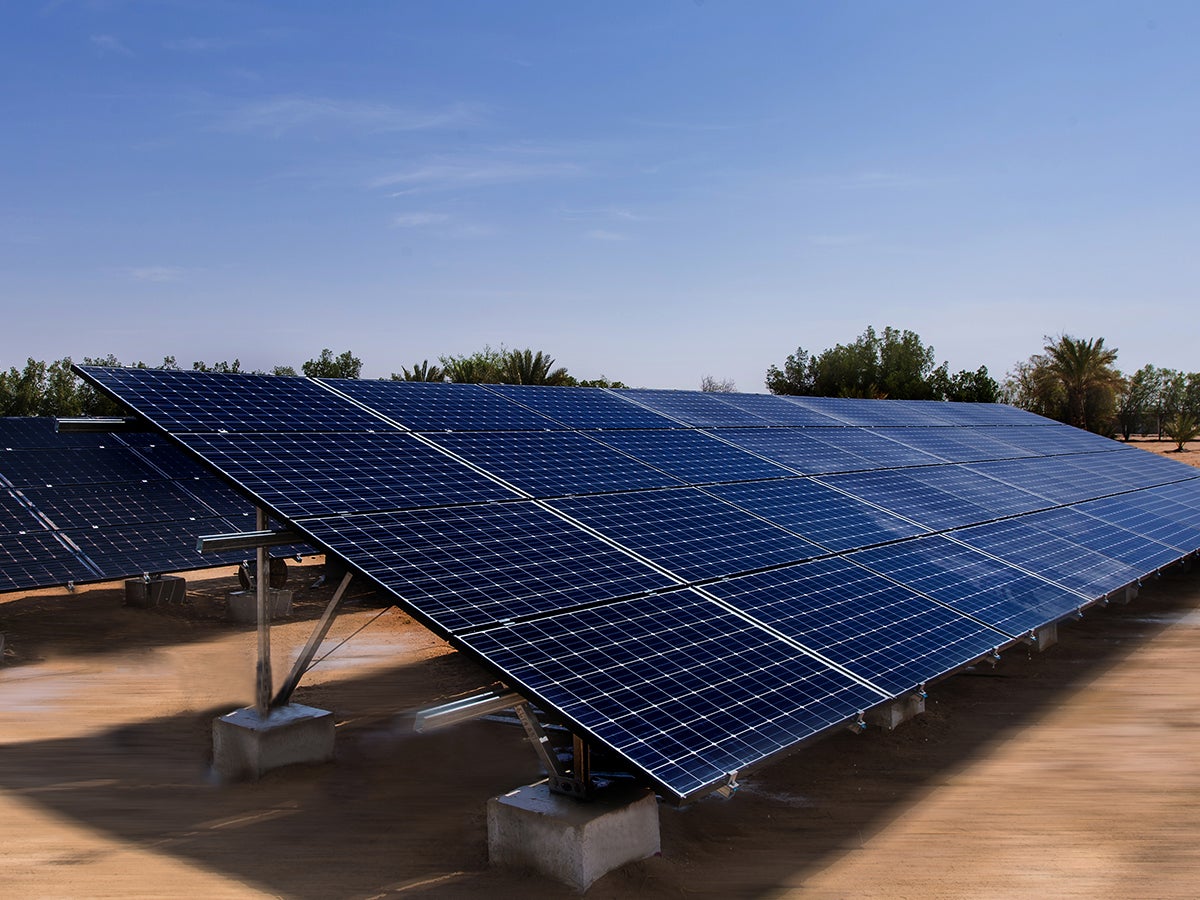
Helping the Nation Harness its Sustainable Energy Resources: A Decade of Qatar Environment and Energy Research Institute
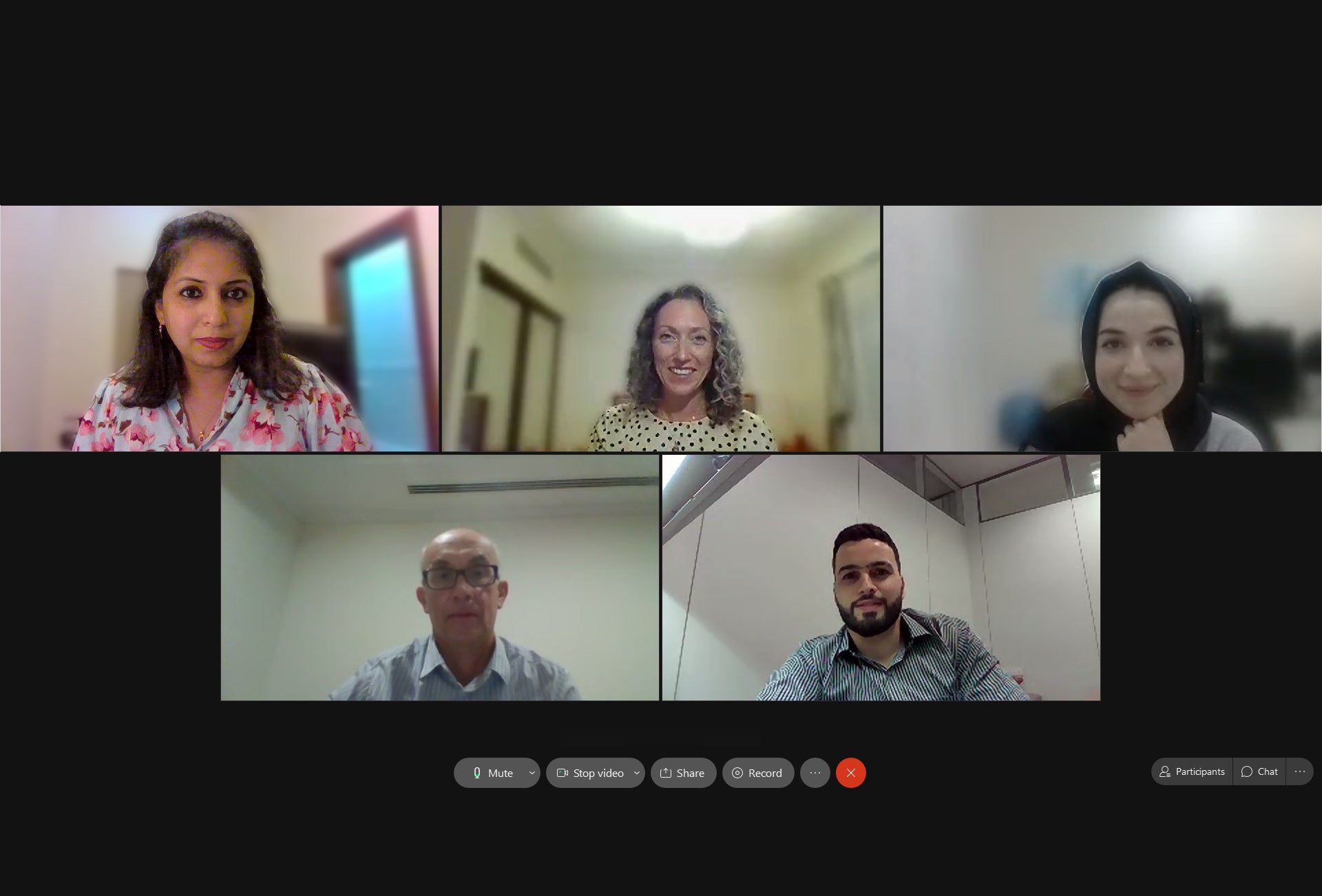
Qatar Environment and Energy Research Institute’s Second Science Majlis Promotes Awareness of Managing Scarce Water Resources
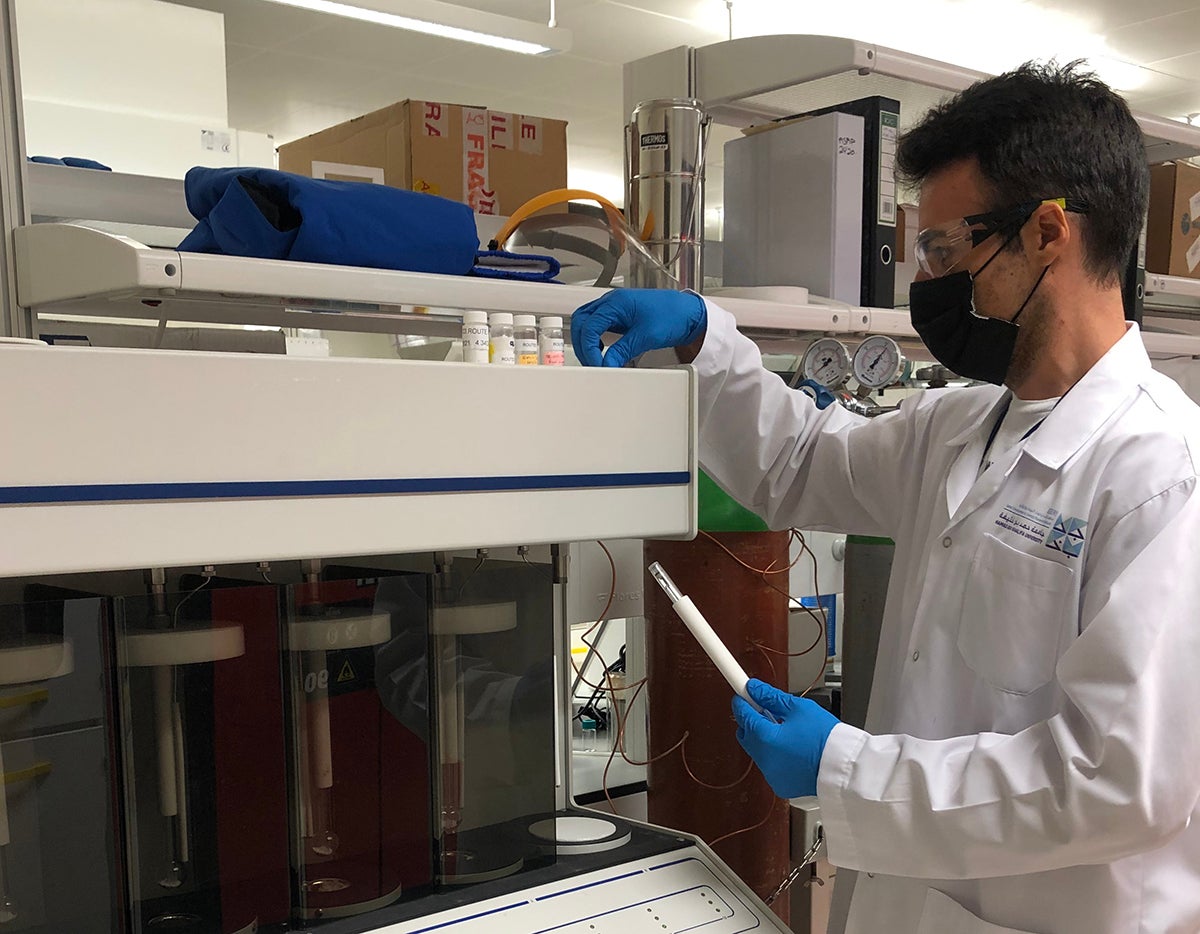
Research and Development Efforts by Qatar Environment and Energy Research Institute Focus on Innovation in Carbon Capture, Utilization, and Storage Technologies
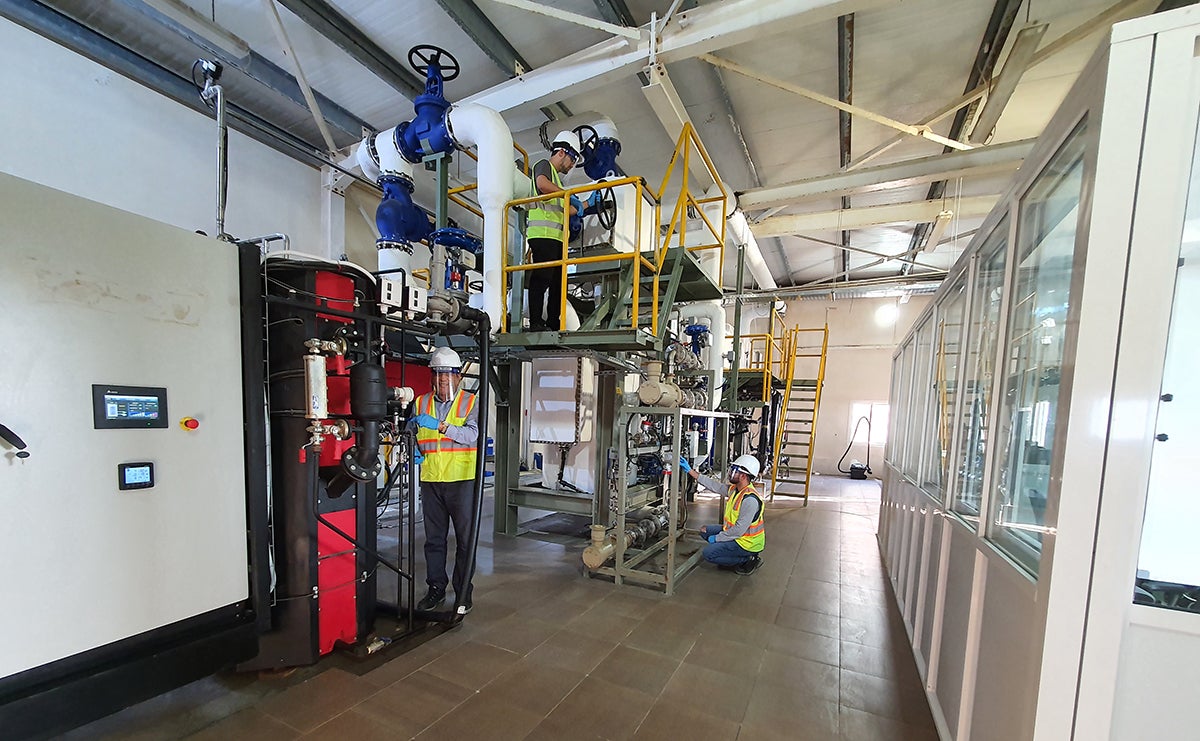
Qatar Environment and Energy Research Institute Develops and Installs MED Seawater Desalination Pilot Plant in Dukhan
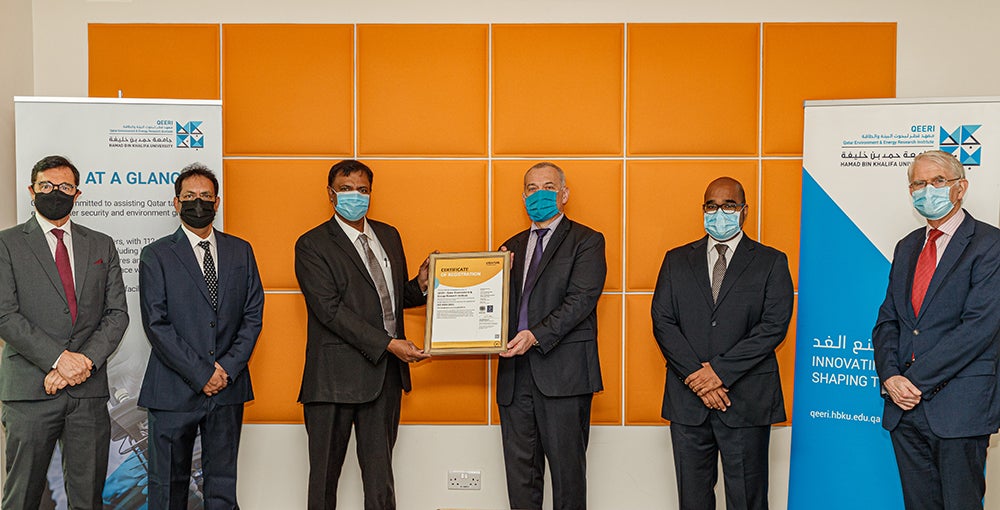
HBKU’s Qatar Environment and Energy Research Institute Awarded ISO Certification for its Integrated Management System

HBKU’s Qatar Environment and Energy Research Institute a Growing Force in Solar Technology Research

HBKU’s Qatar Environment and Energy Research Institute and Qatar Stakeholders Collaborative Project Aims to Detect COVID-19 in Wastewater

Qatar Environment and Energy Research Institute at HBKU Develops New Technology to Remove Oil from Seawater

Advancing Qatar’s Circular Water Economy: Qatar Environment and Energy Research Institute Marks 10 Years

Helping the Nation Harness its Sustainable Energy Resources: A Decade of Qatar Environment and Energy Research Institute

Qatar Environment and Energy Research Institute’s Second Science Majlis Promotes Awareness of Managing Scarce Water Resources

Research and Development Efforts by Qatar Environment and Energy Research Institute Focus on Innovation in Carbon Capture, Utilization, and Storage Technologies

Qatar Environment and Energy Research Institute Develops and Installs MED Seawater Desalination Pilot Plant in Dukhan

HBKU’s Qatar Environment and Energy Research Institute Awarded ISO Certification for its Integrated Management System

HBKU’s Qatar Environment and Energy Research Institute a Growing Force in Solar Technology Research

HBKU’s Qatar Environment and Energy Research Institute and Qatar Stakeholders Collaborative Project Aims to Detect COVID-19 in Wastewater

Qatar Environment and Energy Research Institute at HBKU Develops New Technology to Remove Oil from Seawater

Advancing Qatar’s Circular Water Economy: Qatar Environment and Energy Research Institute Marks 10 Years

Helping the Nation Harness its Sustainable Energy Resources: A Decade of Qatar Environment and Energy Research Institute

Qatar Environment and Energy Research Institute’s Second Science Majlis Promotes Awareness of Managing Scarce Water Resources

Research and Development Efforts by Qatar Environment and Energy Research Institute Focus on Innovation in Carbon Capture, Utilization, and Storage Technologies

Qatar Environment and Energy Research Institute Develops and Installs MED Seawater Desalination Pilot Plant in Dukhan

HBKU’s Qatar Environment and Energy Research Institute Awarded ISO Certification for its Integrated Management System

HBKU’s Qatar Environment and Energy Research Institute a Growing Force in Solar Technology Research

HBKU’s Qatar Environment and Energy Research Institute and Qatar Stakeholders Collaborative Project Aims to Detect COVID-19 in Wastewater

Qatar Environment and Energy Research Institute at HBKU Develops New Technology to Remove Oil from Seawater

Advancing Qatar’s Circular Water Economy: Qatar Environment and Energy Research Institute Marks 10 Years

Helping the Nation Harness its Sustainable Energy Resources: A Decade of Qatar Environment and Energy Research Institute

Qatar Environment and Energy Research Institute’s Second Science Majlis Promotes Awareness of Managing Scarce Water Resources

Research and Development Efforts by Qatar Environment and Energy Research Institute Focus on Innovation in Carbon Capture, Utilization, and Storage Technologies

Qatar Environment and Energy Research Institute Develops and Installs MED Seawater Desalination Pilot Plant in Dukhan

HBKU’s Qatar Environment and Energy Research Institute Awarded ISO Certification for its Integrated Management System

HBKU’s Qatar Environment and Energy Research Institute a Growing Force in Solar Technology Research

HBKU’s Qatar Environment and Energy Research Institute and Qatar Stakeholders Collaborative Project Aims to Detect COVID-19 in Wastewater

Qatar Environment and Energy Research Institute at HBKU Develops New Technology to Remove Oil from Seawater

Advancing Qatar’s Circular Water Economy: Qatar Environment and Energy Research Institute Marks 10 Years

Helping the Nation Harness its Sustainable Energy Resources: A Decade of Qatar Environment and Energy Research Institute

Qatar Environment and Energy Research Institute’s Second Science Majlis Promotes Awareness of Managing Scarce Water Resources

Research and Development Efforts by Qatar Environment and Energy Research Institute Focus on Innovation in Carbon Capture, Utilization, and Storage Technologies

Qatar Environment and Energy Research Institute Develops and Installs MED Seawater Desalination Pilot Plant in Dukhan

HBKU’s Qatar Environment and Energy Research Institute Awarded ISO Certification for its Integrated Management System

HBKU’s Qatar Environment and Energy Research Institute a Growing Force in Solar Technology Research

HBKU’s Qatar Environment and Energy Research Institute and Qatar Stakeholders Collaborative Project Aims to Detect COVID-19 in Wastewater

Qatar Environment and Energy Research Institute at HBKU Develops New Technology to Remove Oil from Seawater

Advancing Qatar’s Circular Water Economy: Qatar Environment and Energy Research Institute Marks 10 Years

Helping the Nation Harness its Sustainable Energy Resources: A Decade of Qatar Environment and Energy Research Institute

Qatar Environment and Energy Research Institute’s Second Science Majlis Promotes Awareness of Managing Scarce Water Resources

Research and Development Efforts by Qatar Environment and Energy Research Institute Focus on Innovation in Carbon Capture, Utilization, and Storage Technologies

Qatar Environment and Energy Research Institute Develops and Installs MED Seawater Desalination Pilot Plant in Dukhan

HBKU’s Qatar Environment and Energy Research Institute Awarded ISO Certification for its Integrated Management System

HBKU’s Qatar Environment and Energy Research Institute a Growing Force in Solar Technology Research

HBKU’s Qatar Environment and Energy Research Institute and Qatar Stakeholders Collaborative Project Aims to Detect COVID-19 in Wastewater

Qatar Environment and Energy Research Institute at HBKU Develops New Technology to Remove Oil from Seawater

Advancing Qatar’s Circular Water Economy: Qatar Environment and Energy Research Institute Marks 10 Years

Helping the Nation Harness its Sustainable Energy Resources: A Decade of Qatar Environment and Energy Research Institute

Qatar Environment and Energy Research Institute’s Second Science Majlis Promotes Awareness of Managing Scarce Water Resources

Research and Development Efforts by Qatar Environment and Energy Research Institute Focus on Innovation in Carbon Capture, Utilization, and Storage Technologies

Qatar Environment and Energy Research Institute Develops and Installs MED Seawater Desalination Pilot Plant in Dukhan

HBKU’s Qatar Environment and Energy Research Institute Awarded ISO Certification for its Integrated Management System

HBKU’s Qatar Environment and Energy Research Institute a Growing Force in Solar Technology Research

HBKU’s Qatar Environment and Energy Research Institute and Qatar Stakeholders Collaborative Project Aims to Detect COVID-19 in Wastewater

Qatar Environment and Energy Research Institute at HBKU Develops New Technology to Remove Oil from Seawater

Advancing Qatar’s Circular Water Economy: Qatar Environment and Energy Research Institute Marks 10 Years

Helping the Nation Harness its Sustainable Energy Resources: A Decade of Qatar Environment and Energy Research Institute

Qatar Environment and Energy Research Institute’s Second Science Majlis Promotes Awareness of Managing Scarce Water Resources

Research and Development Efforts by Qatar Environment and Energy Research Institute Focus on Innovation in Carbon Capture, Utilization, and Storage Technologies

Qatar Environment and Energy Research Institute Develops and Installs MED Seawater Desalination Pilot Plant in Dukhan

HBKU’s Qatar Environment and Energy Research Institute Awarded ISO Certification for its Integrated Management System

HBKU’s Qatar Environment and Energy Research Institute a Growing Force in Solar Technology Research

HBKU’s Qatar Environment and Energy Research Institute and Qatar Stakeholders Collaborative Project Aims to Detect COVID-19 in Wastewater

Qatar Environment and Energy Research Institute at HBKU Develops New Technology to Remove Oil from Seawater

Advancing Qatar’s Circular Water Economy: Qatar Environment and Energy Research Institute Marks 10 Years

Helping the Nation Harness its Sustainable Energy Resources: A Decade of Qatar Environment and Energy Research Institute

Qatar Environment and Energy Research Institute’s Second Science Majlis Promotes Awareness of Managing Scarce Water Resources

Research and Development Efforts by Qatar Environment and Energy Research Institute Focus on Innovation in Carbon Capture, Utilization, and Storage Technologies

Qatar Environment and Energy Research Institute Develops and Installs MED Seawater Desalination Pilot Plant in Dukhan

HBKU’s Qatar Environment and Energy Research Institute Awarded ISO Certification for its Integrated Management System

HBKU’s Qatar Environment and Energy Research Institute a Growing Force in Solar Technology Research

HBKU’s Qatar Environment and Energy Research Institute and Qatar Stakeholders Collaborative Project Aims to Detect COVID-19 in Wastewater

Qatar Environment and Energy Research Institute at HBKU Develops New Technology to Remove Oil from Seawater

Advancing Qatar’s Circular Water Economy: Qatar Environment and Energy Research Institute Marks 10 Years

Helping the Nation Harness its Sustainable Energy Resources: A Decade of Qatar Environment and Energy Research Institute

Qatar Environment and Energy Research Institute’s Second Science Majlis Promotes Awareness of Managing Scarce Water Resources

Research and Development Efforts by Qatar Environment and Energy Research Institute Focus on Innovation in Carbon Capture, Utilization, and Storage Technologies

Qatar Environment and Energy Research Institute Develops and Installs MED Seawater Desalination Pilot Plant in Dukhan

HBKU’s Qatar Environment and Energy Research Institute Awarded ISO Certification for its Integrated Management System

HBKU’s Qatar Environment and Energy Research Institute a Growing Force in Solar Technology Research

HBKU’s Qatar Environment and Energy Research Institute and Qatar Stakeholders Collaborative Project Aims to Detect COVID-19 in Wastewater

Qatar Environment and Energy Research Institute at HBKU Develops New Technology to Remove Oil from Seawater

Advancing Qatar’s Circular Water Economy: Qatar Environment and Energy Research Institute Marks 10 Years

Helping the Nation Harness its Sustainable Energy Resources: A Decade of Qatar Environment and Energy Research Institute

Qatar Environment and Energy Research Institute’s Second Science Majlis Promotes Awareness of Managing Scarce Water Resources

Research and Development Efforts by Qatar Environment and Energy Research Institute Focus on Innovation in Carbon Capture, Utilization, and Storage Technologies

Qatar Environment and Energy Research Institute Develops and Installs MED Seawater Desalination Pilot Plant in Dukhan

HBKU’s Qatar Environment and Energy Research Institute Awarded ISO Certification for its Integrated Management System

HBKU’s Qatar Environment and Energy Research Institute a Growing Force in Solar Technology Research

HBKU’s Qatar Environment and Energy Research Institute and Qatar Stakeholders Collaborative Project Aims to Detect COVID-19 in Wastewater

Qatar Environment and Energy Research Institute at HBKU Develops New Technology to Remove Oil from Seawater

Advancing Qatar’s Circular Water Economy: Qatar Environment and Energy Research Institute Marks 10 Years

Helping the Nation Harness its Sustainable Energy Resources: A Decade of Qatar Environment and Energy Research Institute

Qatar Environment and Energy Research Institute’s Second Science Majlis Promotes Awareness of Managing Scarce Water Resources

Research and Development Efforts by Qatar Environment and Energy Research Institute Focus on Innovation in Carbon Capture, Utilization, and Storage Technologies

Qatar Environment and Energy Research Institute Develops and Installs MED Seawater Desalination Pilot Plant in Dukhan

HBKU’s Qatar Environment and Energy Research Institute Awarded ISO Certification for its Integrated Management System

HBKU’s Qatar Environment and Energy Research Institute a Growing Force in Solar Technology Research

HBKU’s Qatar Environment and Energy Research Institute and Qatar Stakeholders Collaborative Project Aims to Detect COVID-19 in Wastewater

Qatar Environment and Energy Research Institute at HBKU Develops New Technology to Remove Oil from Seawater

Advancing Qatar’s Circular Water Economy: Qatar Environment and Energy Research Institute Marks 10 Years

Helping the Nation Harness its Sustainable Energy Resources: A Decade of Qatar Environment and Energy Research Institute

Qatar Environment and Energy Research Institute’s Second Science Majlis Promotes Awareness of Managing Scarce Water Resources

Research and Development Efforts by Qatar Environment and Energy Research Institute Focus on Innovation in Carbon Capture, Utilization, and Storage Technologies

Qatar Environment and Energy Research Institute Develops and Installs MED Seawater Desalination Pilot Plant in Dukhan

HBKU’s Qatar Environment and Energy Research Institute Awarded ISO Certification for its Integrated Management System

HBKU’s Qatar Environment and Energy Research Institute a Growing Force in Solar Technology Research

HBKU’s Qatar Environment and Energy Research Institute and Qatar Stakeholders Collaborative Project Aims to Detect COVID-19 in Wastewater

Qatar Environment and Energy Research Institute at HBKU Develops New Technology to Remove Oil from Seawater

Advancing Qatar’s Circular Water Economy: Qatar Environment and Energy Research Institute Marks 10 Years

Helping the Nation Harness its Sustainable Energy Resources: A Decade of Qatar Environment and Energy Research Institute

Qatar Environment and Energy Research Institute’s Second Science Majlis Promotes Awareness of Managing Scarce Water Resources

Research and Development Efforts by Qatar Environment and Energy Research Institute Focus on Innovation in Carbon Capture, Utilization, and Storage Technologies

Qatar Environment and Energy Research Institute Develops and Installs MED Seawater Desalination Pilot Plant in Dukhan

HBKU’s Qatar Environment and Energy Research Institute Awarded ISO Certification for its Integrated Management System

HBKU’s Qatar Environment and Energy Research Institute a Growing Force in Solar Technology Research

HBKU’s Qatar Environment and Energy Research Institute and Qatar Stakeholders Collaborative Project Aims to Detect COVID-19 in Wastewater

Qatar Environment and Energy Research Institute at HBKU Develops New Technology to Remove Oil from Seawater

Advancing Qatar’s Circular Water Economy: Qatar Environment and Energy Research Institute Marks 10 Years

Helping the Nation Harness its Sustainable Energy Resources: A Decade of Qatar Environment and Energy Research Institute

Qatar Environment and Energy Research Institute’s Second Science Majlis Promotes Awareness of Managing Scarce Water Resources

Research and Development Efforts by Qatar Environment and Energy Research Institute Focus on Innovation in Carbon Capture, Utilization, and Storage Technologies

Qatar Environment and Energy Research Institute Develops and Installs MED Seawater Desalination Pilot Plant in Dukhan

HBKU’s Qatar Environment and Energy Research Institute Awarded ISO Certification for its Integrated Management System

HBKU’s Qatar Environment and Energy Research Institute a Growing Force in Solar Technology Research

HBKU’s Qatar Environment and Energy Research Institute and Qatar Stakeholders Collaborative Project Aims to Detect COVID-19 in Wastewater

Qatar Environment and Energy Research Institute at HBKU Develops New Technology to Remove Oil from Seawater

Advancing Qatar’s Circular Water Economy: Qatar Environment and Energy Research Institute Marks 10 Years

Helping the Nation Harness its Sustainable Energy Resources: A Decade of Qatar Environment and Energy Research Institute

Qatar Environment and Energy Research Institute’s Second Science Majlis Promotes Awareness of Managing Scarce Water Resources

Research and Development Efforts by Qatar Environment and Energy Research Institute Focus on Innovation in Carbon Capture, Utilization, and Storage Technologies

Qatar Environment and Energy Research Institute Develops and Installs MED Seawater Desalination Pilot Plant in Dukhan

HBKU’s Qatar Environment and Energy Research Institute Awarded ISO Certification for its Integrated Management System

HBKU’s Qatar Environment and Energy Research Institute a Growing Force in Solar Technology Research

HBKU’s Qatar Environment and Energy Research Institute and Qatar Stakeholders Collaborative Project Aims to Detect COVID-19 in Wastewater

Qatar Environment and Energy Research Institute at HBKU Develops New Technology to Remove Oil from Seawater

Advancing Qatar’s Circular Water Economy: Qatar Environment and Energy Research Institute Marks 10 Years

Helping the Nation Harness its Sustainable Energy Resources: A Decade of Qatar Environment and Energy Research Institute

Qatar Environment and Energy Research Institute’s Second Science Majlis Promotes Awareness of Managing Scarce Water Resources

Research and Development Efforts by Qatar Environment and Energy Research Institute Focus on Innovation in Carbon Capture, Utilization, and Storage Technologies

Qatar Environment and Energy Research Institute Develops and Installs MED Seawater Desalination Pilot Plant in Dukhan

HBKU’s Qatar Environment and Energy Research Institute Awarded ISO Certification for its Integrated Management System

HBKU’s Qatar Environment and Energy Research Institute a Growing Force in Solar Technology Research

HBKU’s Qatar Environment and Energy Research Institute and Qatar Stakeholders Collaborative Project Aims to Detect COVID-19 in Wastewater

Qatar Environment and Energy Research Institute at HBKU Develops New Technology to Remove Oil from Seawater

Advancing Qatar’s Circular Water Economy: Qatar Environment and Energy Research Institute Marks 10 Years

Helping the Nation Harness its Sustainable Energy Resources: A Decade of Qatar Environment and Energy Research Institute

Qatar Environment and Energy Research Institute’s Second Science Majlis Promotes Awareness of Managing Scarce Water Resources

Research and Development Efforts by Qatar Environment and Energy Research Institute Focus on Innovation in Carbon Capture, Utilization, and Storage Technologies

Qatar Environment and Energy Research Institute Develops and Installs MED Seawater Desalination Pilot Plant in Dukhan

HBKU’s Qatar Environment and Energy Research Institute Awarded ISO Certification for its Integrated Management System

HBKU’s Qatar Environment and Energy Research Institute a Growing Force in Solar Technology Research

HBKU’s Qatar Environment and Energy Research Institute and Qatar Stakeholders Collaborative Project Aims to Detect COVID-19 in Wastewater

Qatar Environment and Energy Research Institute at HBKU Develops New Technology to Remove Oil from Seawater

Advancing Qatar’s Circular Water Economy: Qatar Environment and Energy Research Institute Marks 10 Years

Helping the Nation Harness its Sustainable Energy Resources: A Decade of Qatar Environment and Energy Research Institute

Qatar Environment and Energy Research Institute’s Second Science Majlis Promotes Awareness of Managing Scarce Water Resources

Research and Development Efforts by Qatar Environment and Energy Research Institute Focus on Innovation in Carbon Capture, Utilization, and Storage Technologies

Qatar Environment and Energy Research Institute Develops and Installs MED Seawater Desalination Pilot Plant in Dukhan

HBKU’s Qatar Environment and Energy Research Institute Awarded ISO Certification for its Integrated Management System

HBKU’s Qatar Environment and Energy Research Institute a Growing Force in Solar Technology Research

HBKU’s Qatar Environment and Energy Research Institute and Qatar Stakeholders Collaborative Project Aims to Detect COVID-19 in Wastewater

Qatar Environment and Energy Research Institute at HBKU Develops New Technology to Remove Oil from Seawater

Advancing Qatar’s Circular Water Economy: Qatar Environment and Energy Research Institute Marks 10 Years

Helping the Nation Harness its Sustainable Energy Resources: A Decade of Qatar Environment and Energy Research Institute

Qatar Environment and Energy Research Institute’s Second Science Majlis Promotes Awareness of Managing Scarce Water Resources

Research and Development Efforts by Qatar Environment and Energy Research Institute Focus on Innovation in Carbon Capture, Utilization, and Storage Technologies

Qatar Environment and Energy Research Institute Develops and Installs MED Seawater Desalination Pilot Plant in Dukhan

HBKU’s Qatar Environment and Energy Research Institute Awarded ISO Certification for its Integrated Management System

HBKU’s Qatar Environment and Energy Research Institute a Growing Force in Solar Technology Research

HBKU’s Qatar Environment and Energy Research Institute and Qatar Stakeholders Collaborative Project Aims to Detect COVID-19 in Wastewater

Qatar Environment and Energy Research Institute at HBKU Develops New Technology to Remove Oil from Seawater

Advancing Qatar’s Circular Water Economy: Qatar Environment and Energy Research Institute Marks 10 Years

Helping the Nation Harness its Sustainable Energy Resources: A Decade of Qatar Environment and Energy Research Institute

Qatar Environment and Energy Research Institute’s Second Science Majlis Promotes Awareness of Managing Scarce Water Resources

Research and Development Efforts by Qatar Environment and Energy Research Institute Focus on Innovation in Carbon Capture, Utilization, and Storage Technologies

Qatar Environment and Energy Research Institute Develops and Installs MED Seawater Desalination Pilot Plant in Dukhan

HBKU’s Qatar Environment and Energy Research Institute Awarded ISO Certification for its Integrated Management System

HBKU’s Qatar Environment and Energy Research Institute a Growing Force in Solar Technology Research

HBKU’s Qatar Environment and Energy Research Institute and Qatar Stakeholders Collaborative Project Aims to Detect COVID-19 in Wastewater

Qatar Environment and Energy Research Institute at HBKU Develops New Technology to Remove Oil from Seawater

Advancing Qatar’s Circular Water Economy: Qatar Environment and Energy Research Institute Marks 10 Years

Helping the Nation Harness its Sustainable Energy Resources: A Decade of Qatar Environment and Energy Research Institute

Qatar Environment and Energy Research Institute’s Second Science Majlis Promotes Awareness of Managing Scarce Water Resources

Research and Development Efforts by Qatar Environment and Energy Research Institute Focus on Innovation in Carbon Capture, Utilization, and Storage Technologies

Qatar Environment and Energy Research Institute Develops and Installs MED Seawater Desalination Pilot Plant in Dukhan

HBKU’s Qatar Environment and Energy Research Institute Awarded ISO Certification for its Integrated Management System

HBKU’s Qatar Environment and Energy Research Institute a Growing Force in Solar Technology Research

HBKU’s Qatar Environment and Energy Research Institute and Qatar Stakeholders Collaborative Project Aims to Detect COVID-19 in Wastewater

Qatar Environment and Energy Research Institute at HBKU Develops New Technology to Remove Oil from Seawater

Advancing Qatar’s Circular Water Economy: Qatar Environment and Energy Research Institute Marks 10 Years

Helping the Nation Harness its Sustainable Energy Resources: A Decade of Qatar Environment and Energy Research Institute

Qatar Environment and Energy Research Institute’s Second Science Majlis Promotes Awareness of Managing Scarce Water Resources

Research and Development Efforts by Qatar Environment and Energy Research Institute Focus on Innovation in Carbon Capture, Utilization, and Storage Technologies

Qatar Environment and Energy Research Institute Develops and Installs MED Seawater Desalination Pilot Plant in Dukhan

HBKU’s Qatar Environment and Energy Research Institute Awarded ISO Certification for its Integrated Management System

HBKU’s Qatar Environment and Energy Research Institute a Growing Force in Solar Technology Research

HBKU’s Qatar Environment and Energy Research Institute and Qatar Stakeholders Collaborative Project Aims to Detect COVID-19 in Wastewater

Qatar Environment and Energy Research Institute at HBKU Develops New Technology to Remove Oil from Seawater

Advancing Qatar’s Circular Water Economy: Qatar Environment and Energy Research Institute Marks 10 Years

Helping the Nation Harness its Sustainable Energy Resources: A Decade of Qatar Environment and Energy Research Institute

Qatar Environment and Energy Research Institute’s Second Science Majlis Promotes Awareness of Managing Scarce Water Resources

Research and Development Efforts by Qatar Environment and Energy Research Institute Focus on Innovation in Carbon Capture, Utilization, and Storage Technologies

Qatar Environment and Energy Research Institute Develops and Installs MED Seawater Desalination Pilot Plant in Dukhan

HBKU’s Qatar Environment and Energy Research Institute Awarded ISO Certification for its Integrated Management System

HBKU’s Qatar Environment and Energy Research Institute a Growing Force in Solar Technology Research

HBKU’s Qatar Environment and Energy Research Institute and Qatar Stakeholders Collaborative Project Aims to Detect COVID-19 in Wastewater

Qatar Environment and Energy Research Institute at HBKU Develops New Technology to Remove Oil from Seawater

Advancing Qatar’s Circular Water Economy: Qatar Environment and Energy Research Institute Marks 10 Years

Helping the Nation Harness its Sustainable Energy Resources: A Decade of Qatar Environment and Energy Research Institute

Qatar Environment and Energy Research Institute’s Second Science Majlis Promotes Awareness of Managing Scarce Water Resources

Research and Development Efforts by Qatar Environment and Energy Research Institute Focus on Innovation in Carbon Capture, Utilization, and Storage Technologies

Qatar Environment and Energy Research Institute Develops and Installs MED Seawater Desalination Pilot Plant in Dukhan

HBKU’s Qatar Environment and Energy Research Institute Awarded ISO Certification for its Integrated Management System

HBKU’s Qatar Environment and Energy Research Institute a Growing Force in Solar Technology Research

HBKU’s Qatar Environment and Energy Research Institute and Qatar Stakeholders Collaborative Project Aims to Detect COVID-19 in Wastewater

Qatar Environment and Energy Research Institute at HBKU Develops New Technology to Remove Oil from Seawater

Advancing Qatar’s Circular Water Economy: Qatar Environment and Energy Research Institute Marks 10 Years

Helping the Nation Harness its Sustainable Energy Resources: A Decade of Qatar Environment and Energy Research Institute

Qatar Environment and Energy Research Institute’s Second Science Majlis Promotes Awareness of Managing Scarce Water Resources

Research and Development Efforts by Qatar Environment and Energy Research Institute Focus on Innovation in Carbon Capture, Utilization, and Storage Technologies

Qatar Environment and Energy Research Institute Develops and Installs MED Seawater Desalination Pilot Plant in Dukhan

HBKU’s Qatar Environment and Energy Research Institute Awarded ISO Certification for its Integrated Management System

HBKU’s Qatar Environment and Energy Research Institute a Growing Force in Solar Technology Research

HBKU’s Qatar Environment and Energy Research Institute and Qatar Stakeholders Collaborative Project Aims to Detect COVID-19 in Wastewater

Qatar Environment and Energy Research Institute at HBKU Develops New Technology to Remove Oil from Seawater

Advancing Qatar’s Circular Water Economy: Qatar Environment and Energy Research Institute Marks 10 Years

Helping the Nation Harness its Sustainable Energy Resources: A Decade of Qatar Environment and Energy Research Institute

Qatar Environment and Energy Research Institute’s Second Science Majlis Promotes Awareness of Managing Scarce Water Resources

Research and Development Efforts by Qatar Environment and Energy Research Institute Focus on Innovation in Carbon Capture, Utilization, and Storage Technologies

Qatar Environment and Energy Research Institute Develops and Installs MED Seawater Desalination Pilot Plant in Dukhan

HBKU’s Qatar Environment and Energy Research Institute Awarded ISO Certification for its Integrated Management System

HBKU’s Qatar Environment and Energy Research Institute a Growing Force in Solar Technology Research

HBKU’s Qatar Environment and Energy Research Institute and Qatar Stakeholders Collaborative Project Aims to Detect COVID-19 in Wastewater

Qatar Environment and Energy Research Institute at HBKU Develops New Technology to Remove Oil from Seawater

Advancing Qatar’s Circular Water Economy: Qatar Environment and Energy Research Institute Marks 10 Years

Helping the Nation Harness its Sustainable Energy Resources: A Decade of Qatar Environment and Energy Research Institute

Qatar Environment and Energy Research Institute’s Second Science Majlis Promotes Awareness of Managing Scarce Water Resources

Research and Development Efforts by Qatar Environment and Energy Research Institute Focus on Innovation in Carbon Capture, Utilization, and Storage Technologies

Qatar Environment and Energy Research Institute Develops and Installs MED Seawater Desalination Pilot Plant in Dukhan

HBKU’s Qatar Environment and Energy Research Institute Awarded ISO Certification for its Integrated Management System

HBKU’s Qatar Environment and Energy Research Institute a Growing Force in Solar Technology Research

HBKU’s Qatar Environment and Energy Research Institute and Qatar Stakeholders Collaborative Project Aims to Detect COVID-19 in Wastewater

Qatar Environment and Energy Research Institute at HBKU Develops New Technology to Remove Oil from Seawater

Advancing Qatar’s Circular Water Economy: Qatar Environment and Energy Research Institute Marks 10 Years

Helping the Nation Harness its Sustainable Energy Resources: A Decade of Qatar Environment and Energy Research Institute

Qatar Environment and Energy Research Institute’s Second Science Majlis Promotes Awareness of Managing Scarce Water Resources

Research and Development Efforts by Qatar Environment and Energy Research Institute Focus on Innovation in Carbon Capture, Utilization, and Storage Technologies

Qatar Environment and Energy Research Institute Develops and Installs MED Seawater Desalination Pilot Plant in Dukhan

HBKU’s Qatar Environment and Energy Research Institute Awarded ISO Certification for its Integrated Management System

HBKU’s Qatar Environment and Energy Research Institute a Growing Force in Solar Technology Research

HBKU’s Qatar Environment and Energy Research Institute and Qatar Stakeholders Collaborative Project Aims to Detect COVID-19 in Wastewater

Qatar Environment and Energy Research Institute at HBKU Develops New Technology to Remove Oil from Seawater

Advancing Qatar’s Circular Water Economy: Qatar Environment and Energy Research Institute Marks 10 Years

Helping the Nation Harness its Sustainable Energy Resources: A Decade of Qatar Environment and Energy Research Institute

Qatar Environment and Energy Research Institute’s Second Science Majlis Promotes Awareness of Managing Scarce Water Resources

Research and Development Efforts by Qatar Environment and Energy Research Institute Focus on Innovation in Carbon Capture, Utilization, and Storage Technologies

Qatar Environment and Energy Research Institute Develops and Installs MED Seawater Desalination Pilot Plant in Dukhan

HBKU’s Qatar Environment and Energy Research Institute Awarded ISO Certification for its Integrated Management System

HBKU’s Qatar Environment and Energy Research Institute a Growing Force in Solar Technology Research

HBKU’s Qatar Environment and Energy Research Institute and Qatar Stakeholders Collaborative Project Aims to Detect COVID-19 in Wastewater

Qatar Environment and Energy Research Institute at HBKU Develops New Technology to Remove Oil from Seawater

Advancing Qatar’s Circular Water Economy: Qatar Environment and Energy Research Institute Marks 10 Years

Helping the Nation Harness its Sustainable Energy Resources: A Decade of Qatar Environment and Energy Research Institute

Qatar Environment and Energy Research Institute’s Second Science Majlis Promotes Awareness of Managing Scarce Water Resources

Research and Development Efforts by Qatar Environment and Energy Research Institute Focus on Innovation in Carbon Capture, Utilization, and Storage Technologies

Qatar Environment and Energy Research Institute Develops and Installs MED Seawater Desalination Pilot Plant in Dukhan

HBKU’s Qatar Environment and Energy Research Institute Awarded ISO Certification for its Integrated Management System

HBKU’s Qatar Environment and Energy Research Institute a Growing Force in Solar Technology Research

HBKU’s Qatar Environment and Energy Research Institute and Qatar Stakeholders Collaborative Project Aims to Detect COVID-19 in Wastewater

Qatar Environment and Energy Research Institute at HBKU Develops New Technology to Remove Oil from Seawater

Advancing Qatar’s Circular Water Economy: Qatar Environment and Energy Research Institute Marks 10 Years

Helping the Nation Harness its Sustainable Energy Resources: A Decade of Qatar Environment and Energy Research Institute

Qatar Environment and Energy Research Institute’s Second Science Majlis Promotes Awareness of Managing Scarce Water Resources

Research and Development Efforts by Qatar Environment and Energy Research Institute Focus on Innovation in Carbon Capture, Utilization, and Storage Technologies

Qatar Environment and Energy Research Institute Develops and Installs MED Seawater Desalination Pilot Plant in Dukhan

HBKU’s Qatar Environment and Energy Research Institute Awarded ISO Certification for its Integrated Management System

HBKU’s Qatar Environment and Energy Research Institute a Growing Force in Solar Technology Research

HBKU’s Qatar Environment and Energy Research Institute and Qatar Stakeholders Collaborative Project Aims to Detect COVID-19 in Wastewater

Qatar Environment and Energy Research Institute at HBKU Develops New Technology to Remove Oil from Seawater

Advancing Qatar’s Circular Water Economy: Qatar Environment and Energy Research Institute Marks 10 Years

Helping the Nation Harness its Sustainable Energy Resources: A Decade of Qatar Environment and Energy Research Institute

Qatar Environment and Energy Research Institute’s Second Science Majlis Promotes Awareness of Managing Scarce Water Resources

Research and Development Efforts by Qatar Environment and Energy Research Institute Focus on Innovation in Carbon Capture, Utilization, and Storage Technologies

Qatar Environment and Energy Research Institute Develops and Installs MED Seawater Desalination Pilot Plant in Dukhan

HBKU’s Qatar Environment and Energy Research Institute Awarded ISO Certification for its Integrated Management System

HBKU’s Qatar Environment and Energy Research Institute a Growing Force in Solar Technology Research

HBKU’s Qatar Environment and Energy Research Institute and Qatar Stakeholders Collaborative Project Aims to Detect COVID-19 in Wastewater

Qatar Environment and Energy Research Institute at HBKU Develops New Technology to Remove Oil from Seawater

Advancing Qatar’s Circular Water Economy: Qatar Environment and Energy Research Institute Marks 10 Years

Helping the Nation Harness its Sustainable Energy Resources: A Decade of Qatar Environment and Energy Research Institute

Qatar Environment and Energy Research Institute’s Second Science Majlis Promotes Awareness of Managing Scarce Water Resources

Research and Development Efforts by Qatar Environment and Energy Research Institute Focus on Innovation in Carbon Capture, Utilization, and Storage Technologies

Qatar Environment and Energy Research Institute Develops and Installs MED Seawater Desalination Pilot Plant in Dukhan

HBKU’s Qatar Environment and Energy Research Institute Awarded ISO Certification for its Integrated Management System

HBKU’s Qatar Environment and Energy Research Institute a Growing Force in Solar Technology Research

HBKU’s Qatar Environment and Energy Research Institute and Qatar Stakeholders Collaborative Project Aims to Detect COVID-19 in Wastewater

Qatar Environment and Energy Research Institute at HBKU Develops New Technology to Remove Oil from Seawater

Advancing Qatar’s Circular Water Economy: Qatar Environment and Energy Research Institute Marks 10 Years

Helping the Nation Harness its Sustainable Energy Resources: A Decade of Qatar Environment and Energy Research Institute

Qatar Environment and Energy Research Institute’s Second Science Majlis Promotes Awareness of Managing Scarce Water Resources

Research and Development Efforts by Qatar Environment and Energy Research Institute Focus on Innovation in Carbon Capture, Utilization, and Storage Technologies

Qatar Environment and Energy Research Institute Develops and Installs MED Seawater Desalination Pilot Plant in Dukhan

HBKU’s Qatar Environment and Energy Research Institute Awarded ISO Certification for its Integrated Management System

HBKU’s Qatar Environment and Energy Research Institute a Growing Force in Solar Technology Research

HBKU’s Qatar Environment and Energy Research Institute and Qatar Stakeholders Collaborative Project Aims to Detect COVID-19 in Wastewater

Qatar Environment and Energy Research Institute at HBKU Develops New Technology to Remove Oil from Seawater

Advancing Qatar’s Circular Water Economy: Qatar Environment and Energy Research Institute Marks 10 Years

Helping the Nation Harness its Sustainable Energy Resources: A Decade of Qatar Environment and Energy Research Institute

Qatar Environment and Energy Research Institute’s Second Science Majlis Promotes Awareness of Managing Scarce Water Resources

Research and Development Efforts by Qatar Environment and Energy Research Institute Focus on Innovation in Carbon Capture, Utilization, and Storage Technologies

Qatar Environment and Energy Research Institute Develops and Installs MED Seawater Desalination Pilot Plant in Dukhan

HBKU’s Qatar Environment and Energy Research Institute Awarded ISO Certification for its Integrated Management System

HBKU’s Qatar Environment and Energy Research Institute a Growing Force in Solar Technology Research

HBKU’s Qatar Environment and Energy Research Institute and Qatar Stakeholders Collaborative Project Aims to Detect COVID-19 in Wastewater

Qatar Environment and Energy Research Institute at HBKU Develops New Technology to Remove Oil from Seawater

Advancing Qatar’s Circular Water Economy: Qatar Environment and Energy Research Institute Marks 10 Years

Helping the Nation Harness its Sustainable Energy Resources: A Decade of Qatar Environment and Energy Research Institute

Qatar Environment and Energy Research Institute’s Second Science Majlis Promotes Awareness of Managing Scarce Water Resources

Research and Development Efforts by Qatar Environment and Energy Research Institute Focus on Innovation in Carbon Capture, Utilization, and Storage Technologies

Qatar Environment and Energy Research Institute Develops and Installs MED Seawater Desalination Pilot Plant in Dukhan

HBKU’s Qatar Environment and Energy Research Institute Awarded ISO Certification for its Integrated Management System

HBKU’s Qatar Environment and Energy Research Institute a Growing Force in Solar Technology Research

HBKU’s Qatar Environment and Energy Research Institute and Qatar Stakeholders Collaborative Project Aims to Detect COVID-19 in Wastewater

Qatar Environment and Energy Research Institute at HBKU Develops New Technology to Remove Oil from Seawater

Advancing Qatar’s Circular Water Economy: Qatar Environment and Energy Research Institute Marks 10 Years

Helping the Nation Harness its Sustainable Energy Resources: A Decade of Qatar Environment and Energy Research Institute

Qatar Environment and Energy Research Institute’s Second Science Majlis Promotes Awareness of Managing Scarce Water Resources

Research and Development Efforts by Qatar Environment and Energy Research Institute Focus on Innovation in Carbon Capture, Utilization, and Storage Technologies

Qatar Environment and Energy Research Institute Develops and Installs MED Seawater Desalination Pilot Plant in Dukhan

HBKU’s Qatar Environment and Energy Research Institute Awarded ISO Certification for its Integrated Management System

HBKU’s Qatar Environment and Energy Research Institute a Growing Force in Solar Technology Research

HBKU’s Qatar Environment and Energy Research Institute and Qatar Stakeholders Collaborative Project Aims to Detect COVID-19 in Wastewater

Qatar Environment and Energy Research Institute at HBKU Develops New Technology to Remove Oil from Seawater

Advancing Qatar’s Circular Water Economy: Qatar Environment and Energy Research Institute Marks 10 Years

Helping the Nation Harness its Sustainable Energy Resources: A Decade of Qatar Environment and Energy Research Institute

Qatar Environment and Energy Research Institute’s Second Science Majlis Promotes Awareness of Managing Scarce Water Resources

Research and Development Efforts by Qatar Environment and Energy Research Institute Focus on Innovation in Carbon Capture, Utilization, and Storage Technologies

Qatar Environment and Energy Research Institute Develops and Installs MED Seawater Desalination Pilot Plant in Dukhan

HBKU’s Qatar Environment and Energy Research Institute Awarded ISO Certification for its Integrated Management System

HBKU’s Qatar Environment and Energy Research Institute a Growing Force in Solar Technology Research

HBKU’s Qatar Environment and Energy Research Institute and Qatar Stakeholders Collaborative Project Aims to Detect COVID-19 in Wastewater

Qatar Environment and Energy Research Institute at HBKU Develops New Technology to Remove Oil from Seawater

Advancing Qatar’s Circular Water Economy: Qatar Environment and Energy Research Institute Marks 10 Years

Helping the Nation Harness its Sustainable Energy Resources: A Decade of Qatar Environment and Energy Research Institute

Qatar Environment and Energy Research Institute’s Second Science Majlis Promotes Awareness of Managing Scarce Water Resources

Research and Development Efforts by Qatar Environment and Energy Research Institute Focus on Innovation in Carbon Capture, Utilization, and Storage Technologies

Qatar Environment and Energy Research Institute Develops and Installs MED Seawater Desalination Pilot Plant in Dukhan

HBKU’s Qatar Environment and Energy Research Institute Awarded ISO Certification for its Integrated Management System

HBKU’s Qatar Environment and Energy Research Institute a Growing Force in Solar Technology Research

HBKU’s Qatar Environment and Energy Research Institute and Qatar Stakeholders Collaborative Project Aims to Detect COVID-19 in Wastewater






